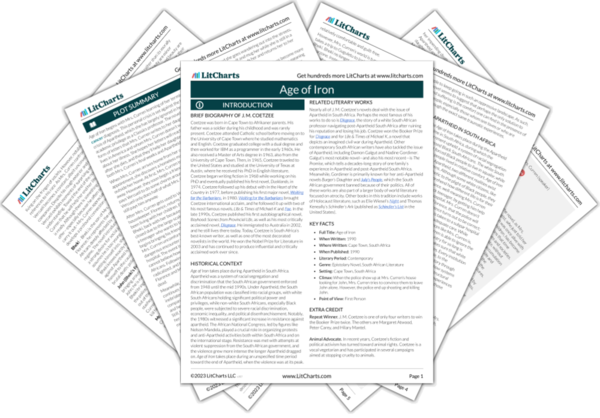Coetzee was born in Cape Town to Afrikaner parents. His father was a soldier during his childhood and was rarely present. Coetzee attended Catholic school before moving on to the University of Cape Town where he studied mathematics and English. Coetzee graduated college with a dual degree and then worked for IBM as a programmer in the early 1960s. He also received a Master of Arts degree in 1963, also from the University of Cape Town. Then, in 1965, Coetzee traveled to the United States and studied at the University of Texas at Austin, where he received his PhD in English literature. Coetzee began writing fiction in 1968 while working on his PhD and eventually published his first novel,
Dusklands, in 1974. Coetzee followed up his debut with
In the Heart of the Country in 1977, before publishing his first major novel,
Waiting for the Barbarians, in 1980.
Waiting for the Barbarians brought Coetzee international acclaim, and he followed it up with two of his most famous novels,
Life & Times of Michael K and
Foe. In the late 1990s, Coetzee published his first autobiographical novel,
Boyhood: Scenes from Provincial Life, as well as his most critically acclaimed novel,
Disgrace. He immigrated to Australia in 2002, and he still lives there today. Today, Coetzee is South Africa’s best-known writer, as well as one of the most decorated novelists in the world. He won the Nobel Prize for Literature in 2003 and has continued to produce influential and critically acclaimed work ever since.
